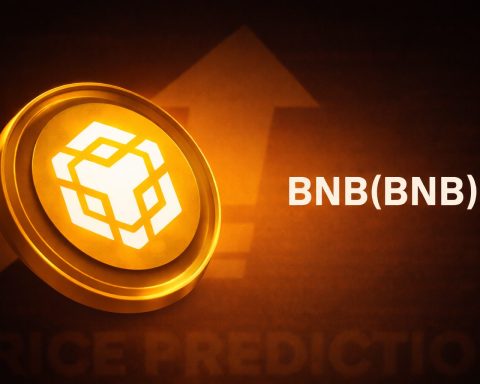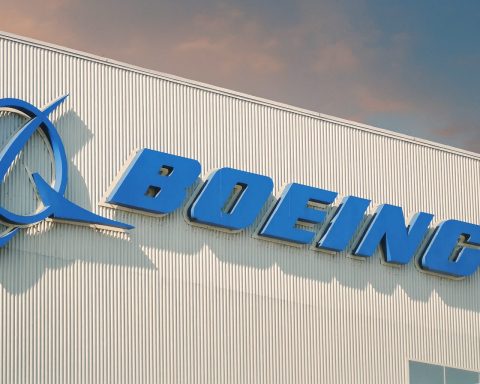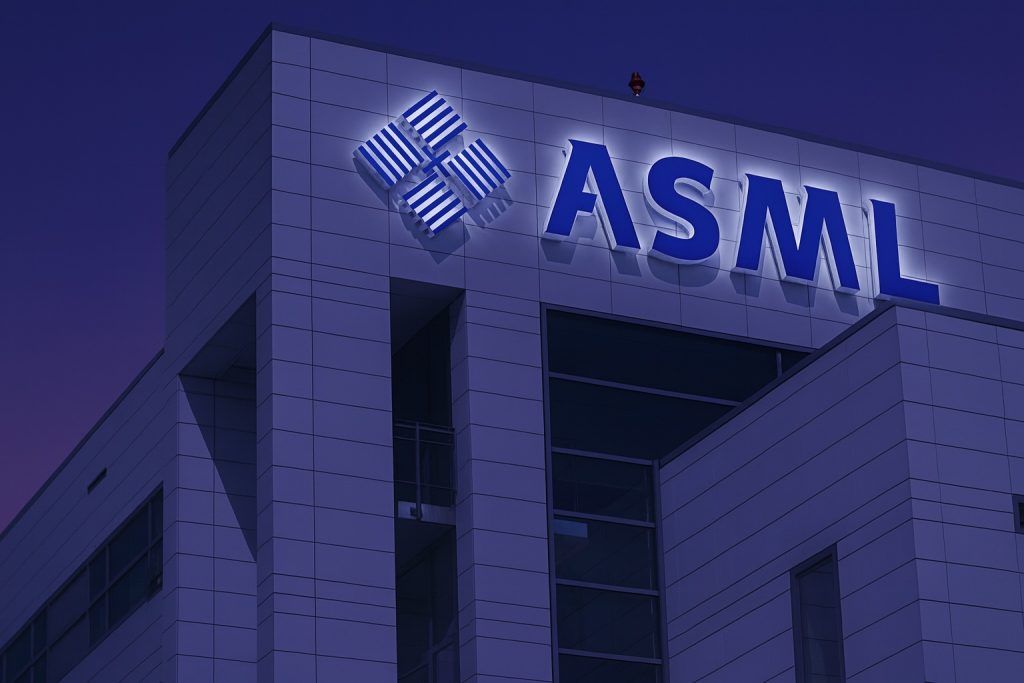- Alphabet stock flirts with record highs: Google parent Alphabet (NASDAQ: GOOGL) closed around $245 per share on Oct. 14, 2025, near an all-time high and just under a $3 trillion market cap [1] [2]. Shares are up roughly 30% year-to-date, vastly outperforming the S&P 500 and tech peers [3].
- Big swings amid market drama: Alphabet briefly joined Apple and Microsoft in the $3 trillion club in mid-September [4]. A global market selloff on Oct. 10 (Nasdaq –3.6% in one day) jolted stocks [5], but Alphabet quickly rebounded on strong fundamentals and AI optimism.
- AI investments and product wins: In the past week Alphabet announced over $24 billion in new AI infrastructure spending – including a $15 billion data center in India and a $9 billion U.S. expansion [6] [7] – underscoring its commitment to AI. Google also rolled out its AI-packed Pixel 10 phones and other gadgets in early October [8], and its cloud unit scored a high-profile deal as the official cloud provider for the 2028 Olympics [9].
- Analysts bullish, targets raised: Wall Street is largely bullish on Alphabet. BMO Capital Markets just hiked its price target to $294, citing Google’s “AI leadership” driving upside in core Search and cloud businesses [10] [11]. UBS also nudged its target to $255 (from $237) ahead of earnings, noting improving ad revenues – though it kept a neutral rating at these levels [12].
- Eyes on earnings and outlook: Alphabet reports Q3 results on Oct. 29. Investors are watching for continued double-digit growth in ad sales and Google Cloud, which saw revenue jump 32% last quarter [13]. Consensus forecasts call for ~16% higher revenue and ~27% higher earnings per share in 2025 [14], as Alphabet’s heavy AI and data center investments fuel future growth.
- Tech sector context and risks: Alphabet’s 2025 rally has outpaced other “Magnificent 7” tech giants [15], helped by a favorable court ruling in September that eased breakup fears [16]. However, regulators remain watchful – the UK just designated Google’s search business for special antitrust oversight [17], and a U.S. trial on Google’s ad tech monopoly is underway. Some experts also warn the AI-driven tech boom could be overextended, drawing parallels to past bubbles [18] even as most analysts still see more upside ahead.
Alphabet Stock Nears Record Highs in October
Alphabet’s stock has been on a tear in 2025, and as of October 14 it is trading around $245 per share, near its highest level ever [19]. At that price, Google’s parent company is worth roughly $2.97 trillion – nearly joining the exclusive club of $3 trillion market-cap companies [20]. The share price has climbed about 30–32% year-to-date, vastly outpacing the broader market. By comparison, the S&P 500 is up only around 12% in 2025 and even the tech-heavy Nasdaq 100 has gained ~17% – making Alphabet one of the top-performing mega-cap tech stocks this year [21] [22]. This rally accelerated in the third quarter: Alphabet’s stock jumped 38% in Q3 alone, its best quarterly performance since 2005 [23].
The past couple of weeks have showcased that volatility cuts both ways. Markets hit fresh peaks in early October on AI euphoria, but then plunged on October 10 amid a resurgence of U.S.-China trade tensions. That day saw the Nasdaq Composite index nosedive 3.6%, its worst one-day drop in months [24]. Alphabet’s shares were not immune to the sell-off, briefly pulling back along with other tech giants. Yet the downturn proved short-lived – by October 14, Google’s stock had regained footing, buoyed by continued optimism around its business prospects and resilience in the face of market jitters. Traders note that even a U.S. government shutdown in early October hardly dented big tech sentiment, and Alphabet quickly rebounded after the trade-war scare as attention refocused on the company’s strong fundamentals and upcoming catalysts [25].
Latest Drivers: AI Megaspending, New Products, and Key News
Several fresh developments in early-to-mid October have contributed to Alphabet’s stock strength. Chief among them is Google’s aggressive investment in AI infrastructure globally, which investors see as a long-term boon. In the past week, the company unveiled plans to spend an eye-popping $24 billion+ on new AI and cloud computing capacity. This includes a $15 billion commitment in India – Google’s largest ever investment in that country – to build a massive AI data center hub in Andhra Pradesh [26]. The facility will start at 1 gigawatt capacity and expand over five years, bolstering Google’s cloud and AI capabilities in a critical growth market. In the U.S., Alphabet also announced a $9 billion expansion in South Carolina to scale up its data center campus with advanced AI supercomputing infrastructure [27]. These hefty capital expenditures underscore Google’s determination to maintain its lead in the AI race. According to Barron’s, Alphabet’s capital spending is projected to reach over $82 billion in 2025, up sharply from $52.5 billion last year, largely to support AI growth [28]. “We’re seeing a once-in-a-generation investment cycle around AI,” noted one analyst, “and Google is all in.”
New product launches and partnerships have also bolstered market sentiment. On October 4, Google held its “Made by Google” event and rolled out a slate of AI-infused devices. It revealed the Pixel 10 and Pixel 10 Pro smartphones, powered by a next-generation Tensor G5 chip that enables “AI everywhere” in the user experience [29]. These flagship phones boast on-device generative AI features and camera improvements thanks to the advanced chip – a clear signal of Google’s strategy to differentiate its hardware with AI capabilities. The company also introduced the Pixel 10 Pro Fold (a foldable phone) and a new Pixel Watch 4, each loaded with AI-driven features from health coaching to voice assistance [30]. While hardware is a smaller piece of Alphabet’s empire, the focus on AI-centric gadgets showcases the technology that is also driving its core businesses like search and cloud computing.
Google’s enterprise technology division made waves as well. In early October, Alphabet’s cloud unit was named the official cloud services provider for the 2028 Olympic Games in Los Angeles [31]. This high-profile partnership (which also involves Team USA and NBCUniversal) will leverage Google’s cloud infrastructure and AI tools – including its upcoming Gemini AI model and new AI-powered search features – to power everything from Olympics event planning to media broadcasting. The announcement highlights Google Cloud’s growing stature and its real-world AI applications, giving investors another reason for confidence. Additionally, Google quietly launched “Gemini Enterprise” on October 9, a new AI platform aimed at helping businesses build their own AI chatbots and assistants [32]. This product launch shows Google capitalizing on demand for generative AI in the corporate market, competing with offerings like OpenAI’s ChatGPT Enterprise. Such moves reinforce the view that Alphabet is positioned to monetize AI across multiple fronts – consumer devices, enterprise services, and its core ad and cloud platforms.
On the regulatory front, Alphabet got some relief in recent weeks but also faces continued scrutiny. A significant positive development came in early September, when a U.S. judge ruled that Google would not be forced to break up its core businesses in a long-running antitrust case – rejecting calls to divest units like Chrome or Android [33]. That court victory removed a major overhang on the stock, and in fact Alphabet’s share price surged 9% in one day on the news [34]. However, regulators haven’t backed off entirely. Across the Atlantic, the U.K.’s Competition and Markets Authority (CMA) on Oct. 10 designated Google’s search business with a new “strategic market status,” the first use of Britain’s tougher Big Tech regulations [35]. This status will subject Google Search to special rules and oversight aimed at curbing anticompetitive behavior – part of a broader trend of global watchdogs intensifying their gaze on Alphabet. In the EU, officials are reportedly preparing a case under the Digital Markets Act that could hit Google with fines (up to 10% of global revenue) if it’s found to favor its own services in search results [36]. And in the U.S., the Justice Department’s separate ad-tech monopoly lawsuit against Google is ongoing, with a remedy trial phase debating whether Google should be forced to sell parts of its advertising business [37]. Thus far, Google’s legal team argues such a breakup (of its AdX exchange, for example) would be extremely complex and unwarranted – likening it to trying to “go to Mars” [38]. While few expect an imminent breakup, these cases remain a background risk for investors to monitor.
Wall Street’s Take: AI Hype, Upgrades, and a Few Cautions
Wall Street analysts have responded to Alphabet’s strong performance and AI moves with a wave of upbeat commentary and target price upgrades. Many experts see further upside for the stock, thanks to Google’s dominant market position and its aggressive push into artificial intelligence – from search enhancements to cloud services – which is expected to drive future growth. As evidence of this optimism, BMO Capital Markets raised its price target for Alphabet to $294 (from $225) on October 9, while reaffirming an “Outperform” rating [39]. BMO’s analysts said their industry checks show Google’s AI leadership is translating into tangible gains in its core businesses. “GOOGL’s AI leadership continues to translate into strength in core Search and GCP [Google Cloud Platform]… driving incremental user value,” the analysts wrote, noting that ongoing AI integrations and product launches are boosting usage [40]. They also pointed out that Google’s advertising business has proven resilient even as it incorporates more AI, and they remain confident that regulators are unlikely to impose a drastic breakup (for instance, BMO believes the chance of a forced split of Google’s ad tech is low) [41]. With AI as a tailwind, BMO modestly raised its revenue estimates for the coming quarters and labeled Alphabet a “Top Pick”, highlighting the company’s diversified model (search, YouTube, cloud, etc.) and robust innovation pipeline.
BMO is not alone – most major analysts maintain bullish outlooks on Alphabet. The consensus on Wall Street is that Google’s stock still trades at a reasonable valuation relative to other tech high-flyers. In fact, one recent analysis noted Alphabet is trading around 20–25× forward earnings, which is actually a discount to many peers, and that its hefty AI investments “spell upside” for long-term growth [42]. The vast majority of brokerage ratings on GOOGL are “Buy” or equivalent, reflecting confidence in its trajectory. Many analysts have been hiking their price targets through 2025 as the company’s results come in strong. For instance, UBS just bumped its target from $237 up to $255 ahead of earnings (though interestingly UBS kept a neutral stance) [43], citing an improving outlook for Google’s ad revenues. In a note to clients, UBS’s Stephen Ju wrote that YouTube advertising revenue grew 13% year-over-year in Q2 (to $9.8 billion) and that trend appears to be continuing into the second half [44]. He sees solid momentum in Google’s core ad business – enough to justify a higher share price – but stopped short of a outright bullish rating, suggesting the stock’s big run has priced in a lot of the good news for now.
Beyond the sell-side research, market commentators and fund managers have also weighed in. Many highlight Alphabet’s formidable competitive advantages – often called a “wide moat” – including its unparalleled network effects (billions of users across Search, Android, Maps, YouTube, etc.) and treasure trove of data that fuel its AI algorithms [45]. Some are even beginning to talk about Alphabet in the same breath as Apple or Microsoft when it comes to long-term stability combined with growth. “Alphabet remains a relatively cheap mega-cap,” one investing column noted, given its double-digit growth and multiple expansion opportunities in cloud and AI [46]. Indeed, in the most recent quarter Google’s revenue and profit growth outpaced expectations, yet the stock’s valuation multiples are still below the likes of Nvidia or Meta – indicating to some that there’s room for further appreciation if it continues executing well [47].
However, it’s not unanimous sunshine from every expert. A few voices have urged caution amid the euphoria. Notably, New York Times financial journalist Andrew Ross Sorkin recently warned that the current AI-driven tech boom bears echoes of the late 1920s stock bubble. He pointed to soaring stock highs, increased leverage (investors borrowing to invest), and speculative frenzy around hot tech themes as factors reminiscent of 1929 [48]. “We will have a crash,” Sorkin cautioned bluntly – though he did not predict when – arguing that surging markets fueled by hype can be fragile [49]. While this is just one opinion, it reflects a broader worry that sentiment may be running ahead of fundamentals in some parts of the tech sector. Even some on Wall Street have quietly wondered if mega-cap stocks like Alphabet are getting “too crowded” as everyone piles in on the AI story [50]. So far, Alphabet’s earnings growth has backed up its stock rise, but the company will need to continue delivering strong results to justify its nearly $3 trillion valuation. Any stumble – whether a revenue miss, a regulatory shock, or a broader market pullback – could test the stock’s resilience.
Performance vs. Tech Peers and Sector Trends
Alphabet’s surge in 2025 comes amid a broader resurgence of big tech stocks, often dubbed the “Magnificent Seven” (Apple, Microsoft, Alphabet, Amazon, Nvidia, Meta, and Tesla). These giants have collectively propelled the market higher this year, largely thanks to excitement over artificial intelligence and robust earnings. Within this elite group, Alphabet has held its own as a top performer. By mid-September it was actually the best-performing of the Seven, up about 32% for the year at that point [51]. Even after early October’s volatility, Google’s YTD gains remain near the top of the pack, roughly on par with Nvidia’s and Meta’s rallies (each up around 30–35% in 2025) [52]. This has solidified Alphabet’s standing as a core driver of the Nasdaq’s advance. It’s worth noting that these mega-cap stocks have done much of the heavy lifting for the market: without them, the S&P’s gain would be far lower. Alphabet, for example, now accounts for around 8% of the S&P 500 by weight, so its 48% jump in market cap over the past year has had an outsized influence [53] [54].
Comparatively, Alphabet’s stock has outpaced most of its industry peers. Rival tech titan Meta (Facebook’s parent) is one of the few big names that actually outgained Alphabet in percentage terms this year, thanks to a dramatic rebound in digital ad spending and cost cuts – Meta’s stock is up ~30% and hit record highs recently [55]. But others like Apple and Amazon have logged more modest YTD rises in the teens to low-20% range. Alphabet’s strength has been underpinned by a return to double-digit growth in its core advertising revenues (after a slowdown last year) and the rapid improvement in its cloud division’s financials [56] [57]. In Q2 2025, Google’s overall revenue jumped 14% year-on-year to $96.4 billion [58] – a remarkably high growth rate for a company of its size, and ahead of most peers – with Search ads up about 12% and YouTube ad revenue up 12–13% [59] [60]. At the same time, Google Cloud turned a corner, reaching profitability for the first time earlier in 2025 and continuing to scale rapidly (Q2 cloud sales were $13.6 billion, +32%) [61]. This combination – a resurgent ad business and a booming cloud unit – sets Alphabet apart from, say, Apple (which is grappling with hardware sales challenges) or Amazon (which saw growth slow last year). It also validates CEO Sundar Pichai’s oft-stated mantra that “AI is positively impacting every part of the business,” from better ad targeting to new cloud AI services [62].
Another aspect where Alphabet shines relative to peers is its profitability and financial stability. The company’s operating margins are holding around 30% [63], even as it spends heavily on AI and data centers. This reflects disciplined cost management (including some belt-tightening like targeted layoffs in non-core areas earlier in the year [64]) and the inherently high margins of Google’s search advertising empire. Alphabet’s balance sheet also remains fortress-like with over $100 billion in cash, giving it ample firepower for buybacks or investments. By contrast, some of the smaller tech names riding the AI wave have little to no profits, which could make them vulnerable if economic conditions turn. This dynamic has led some analysts to call Alphabet a relatively “safe” AI play – an established cash generator that also offers AI-driven growth, compared to speculative AI startups or chipmakers trading at extreme valuations [65].
Of course, macroeconomic and sector-wide trends do influence Alphabet. The company’s fortunes tend to track the digital advertising market and general business spending on tech. On that front, trends have been positive: after a weak 2022, global digital ad spending is growing again (forecast to rise ~8% in 2025) [66], and Alphabet is capturing a huge share of that (Google Search alone is on pace to generate over $200 billion in ad revenue this year [67]). If the economy stays reasonably healthy and interest rates stabilize, many expect ad budgets and cloud spending to remain strong tailwinds for Google. The tech sector as a whole has also benefited from hopes that the Federal Reserve might ease up on interest rate hikes, which particularly helps high-valuation growth stocks. In October, however, rising geopolitical tensions (like the Middle East conflict and renewed U.S.-China friction) and persistent inflation have injected some uncertainty. Tech stocks wobbled when bond yields spiked to 5% earlier, since higher rates can pressure equity valuations. Alphabet’s large size and liquidity mean it often trades in line with broader market sentiment during such swings. That said, its solid fundamentals have made it somewhat of a defensive growth name for many investors – a company that can keep delivering growth even if smaller tech firms struggle.
Looking Ahead: Earnings on Tap and Future Forecasts
All eyes are now on Alphabet’s upcoming earnings report for the third quarter of 2025, set for release on October 29 after the market close [68]. This report will cover the crucial back-to-school and end of summer period (July–September) and will provide the latest read on Google’s momentum in ads, cloud, and other businesses. Expectations are high. Wall Street analysts on average forecast Q3 revenue around $84–85 billion (up mid-teens percentage from a year ago) and earnings per share of roughly $2.29 for the quarter [69]. For the full year 2025, the consensus calls for Alphabet to reach about $406 billion in revenue (≈16% YoY growth) and approximately $10.24 in EPS (≈27% YoY growth) [70]. Hitting or exceeding these numbers could further justify the stock’s strong run. Alphabet’s management has already telegraphed that Q4 will see increased expenses – the company typically ramps up capital spending and hiring in the final quarter – so investors will listen for any commentary on profit margins and cost discipline going forward.
Key areas to watch in the earnings: advertising revenues (especially any commentary on how ad demand is trending amid economic cross-currents), YouTube growth (after new monetization initiatives like Shorts ads), and Google Cloud’s profitability. Last quarter, Google Cloud posted its first-ever profit, signaling that the once money-losing segment is turning into a contributor to the bottom line. If that trend continued in Q3, it will underscore the narrative of Cloud as a third pillar alongside Search and YouTube. Also notable will be any updates on Google’s AI rollouts – for instance, user uptake of the new AI features in Search (the Search Generative Experience), or enterprise client wins for its AI platforms. Given Microsoft’s strong push with OpenAI and Bing, analysts will want to hear how Google plans to maintain dominance in search and online advertising in the AI era. So far, Google’s strategy of infusing AI into its existing products (rather than radically changing the user experience) seems to be retaining users and advertisers [71] [72]. Any data points on that – say, increased ad click-through rates due to AI enhancements – would be very well received.
Looking further out, the growth outlook for Alphabet remains robust yet balanced with some uncertainties. On the bullish side, the company has multiple engines that could drive double-digit expansion for years. Its core search and ads business is expected to keep growing in high single-digits or better, thanks to secular trends like more businesses shifting marketing online and Google’s ability to charge premium rates for targeted ads. YouTube is another growth vector; with over 2.7 billion users, YouTube ad revenues are rising (~12–13% recently) and newer formats like YouTube Shorts and connected-TV ads are just ramping up [73]. Google Cloud, meanwhile, sits in the sweet spot of surging demand for cloud computing and AI services – its backlog of contracted cloud deals stood at $106 billion in Q2 [74], giving excellent revenue visibility. If Google Cloud can continue its ~30% growth trajectory, it will become an ever-larger slice of Alphabet’s pie (currently ~14% of revenue [75]) and boost margins as economies of scale kick in. Moreover, Alphabet’s “Other Bets” like Waymo (self-driving cars) and life sciences could provide optionality; Waymo in particular is expanding robotaxi services to more U.S. cities [76], and while it’s not yet a needle-mover financially, any signs of progress there add to the long-term story.
On the other hand, investors and executives are mindful of risks. Competition in AI is fierce – rivals like Microsoft (with its OpenAI partnership) and Meta are investing similar huge sums, and startups are innovating rapidly. Alphabet will have to keep proving that its AI investments (such as the $85 billion it’s pumping into data centers and AI R&D this year [77]) translate into products and services that either make money or strengthen its moat. There’s also the possibility that AI could disrupt Alphabet’s own business model in unexpected ways. For example, if AI chatbots start handling more search queries directly, Google might serve fewer ad impressions (since users might not click through to websites as often). Alphabet is actively integrating AI to enhance search rather than replace it, but it’s a fine line to walk (one investor letter described Google’s challenge as an “Innovator’s Dilemma” – balancing its legacy search cash cow with the new AI paradigm [78]).
Regulatory and legal challenges form another overhang. While Google won a reprieve in one U.S. antitrust case, it still faces the separate DOJ ad tech suit and multiple probes overseas [79]. Potential fines or forced business changes (even something like having to share data or alter default settings on Android) could create headwinds. At the same time, macroeconomic factors – high inflation, interest rate changes, or a recession – could cut into advertising budgets, which would hit Alphabet’s revenue. These are not immediate crises, but they temper some of the more exuberant forecasts and keep Alphabet’s management focused on execution.
For now, the mood around Alphabet’s stock is largely optimistic. The company has navigated 2025’s hurdles adeptly, from reviving ad growth to showcasing itself as an AI frontrunner. “Alphabet’s diversified tech ecosystem and AI investments position it for long-term leadership,” said one market strategist, adding that the stock’s valuation “still appears reasonable for the growth it’s delivering” [80]. Barring any surprises, many analysts believe Alphabet shares have more room to run – some have targets well above $270, and a few even eye the $300 level in the next 12–18 months if current trends hold [81]. That would imply new record highs ahead. In the near term, the upcoming earnings report will be a key catalyst. A strong quarter with upbeat guidance could confirm the bull case and push the stock into uncharted territory. Conversely, any disappointment would test investors’ patience given how much optimism is baked into the price.
Bottom line: As of mid-October 2025, Alphabet Inc. finds itself at an enviable spot – shares near record highs, buoyed by surging AI momentum, resilient ad revenues, and growing Wall Street confidence. The company is leveraging its dominant core businesses and investing boldly in the next wave of technology. While risks from regulators and an overheated tech market persist, Alphabet’s current trajectory suggests it could continue to be a heavyweight outperformer. With earnings on the horizon and AI initiatives ramping up, Google’s stock will be one to watch through the rest of the year and into 2026, as investors gauge whether this tech titan can keep delivering on the considerable hype.
Sources: Alphabet/Google financial releases and investor statements [82] [83]; TechStock² news analyses and market recaps [84] [85] [86]; Wall Street analyst commentary via InsiderMonkey/FinViz [87] [88]; Reuters and Bloomberg reporting on Alphabet’s AI investments and regulatory developments [89] [90]; Stock market data from October 2025 [91] [92]; and expert insights on the broader tech sector [93] [94].
References
1. stockanalysis.com, 2. stockanalysis.com, 3. ts2.tech, 4. ts2.tech, 5. ts2.tech, 6. www.alphaspread.com, 7. www.alphaspread.com, 8. ts2.tech, 9. finviz.com, 10. finviz.com, 11. finviz.com, 12. finviz.com, 13. ts2.tech, 14. ts2.tech, 15. ts2.tech, 16. ts2.tech, 17. www.alphaspread.com, 18. ts2.tech, 19. stockanalysis.com, 20. stockanalysis.com, 21. ts2.tech, 22. ts2.tech, 23. ts2.tech, 24. ts2.tech, 25. ts2.tech, 26. www.alphaspread.com, 27. www.alphaspread.com, 28. www.alphaspread.com, 29. ts2.tech, 30. ts2.tech, 31. finviz.com, 32. www.alphaspread.com, 33. ts2.tech, 34. ts2.tech, 35. www.alphaspread.com, 36. ts2.tech, 37. ts2.tech, 38. ts2.tech, 39. finviz.com, 40. finviz.com, 41. finviz.com, 42. ts2.tech, 43. finviz.com, 44. finviz.com, 45. finviz.com, 46. ts2.tech, 47. ts2.tech, 48. ts2.tech, 49. ts2.tech, 50. finviz.com, 51. ts2.tech, 52. ts2.tech, 53. stockanalysis.com, 54. stockanalysis.com, 55. ts2.tech, 56. ts2.tech, 57. ts2.tech, 58. ts2.tech, 59. ts2.tech, 60. finviz.com, 61. ts2.tech, 62. ts2.tech, 63. ts2.tech, 64. ts2.tech, 65. ts2.tech, 66. ts2.tech, 67. ts2.tech, 68. www.nasdaq.com, 69. www.zacks.com, 70. ts2.tech, 71. ts2.tech, 72. ts2.tech, 73. ts2.tech, 74. ts2.tech, 75. ts2.tech, 76. ts2.tech, 77. ts2.tech, 78. finviz.com, 79. ts2.tech, 80. ts2.tech, 81. finviz.com, 82. ts2.tech, 83. ts2.tech, 84. ts2.tech, 85. ts2.tech, 86. ts2.tech, 87. finviz.com, 88. finviz.com, 89. www.alphaspread.com, 90. www.alphaspread.com, 91. stockanalysis.com, 92. stockanalysis.com, 93. ts2.tech, 94. ts2.tech









